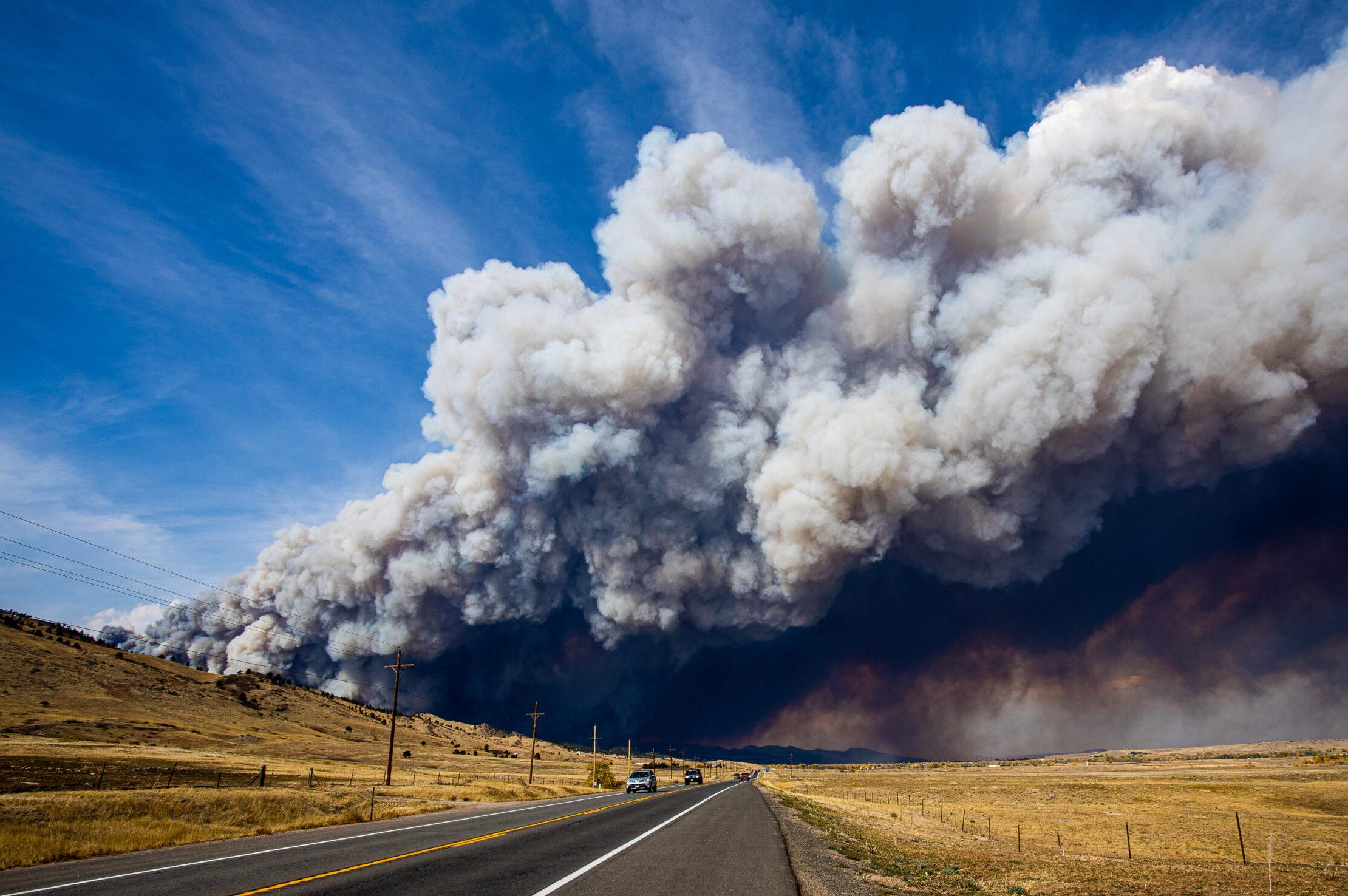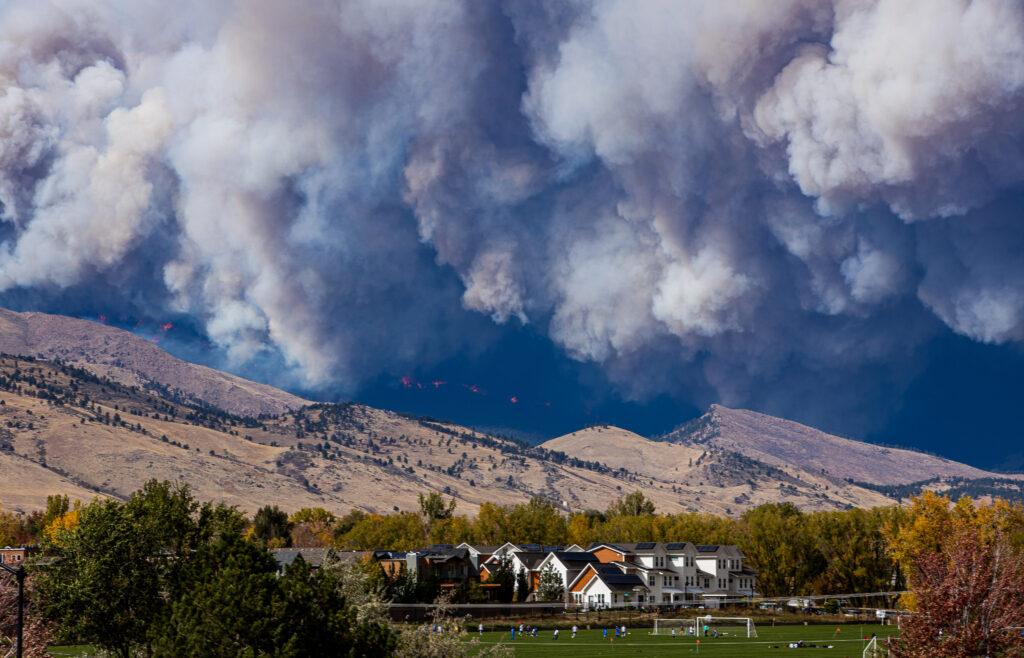
In the past week, three significant fires have ignited in Colorado, joining three other large fires that have burned for months.
As of Oct. 18, the East Troublesome fire had burned through 12,655 acres north of Granby, a popular recreation destination. The Calwood fire, which started around midday on Saturday, Oct. 17, burned through 8,788 acres by Sunday afternoon. And the Lefthand Canyon fire started just to the south of that Sunday afternoon and burned through more than 300 acres.
“We’ve been really concerned about fire danger in Boulder County for a while,” said Mike Wagner, a division chief with the Boulder County Sheriff’s department, in a briefing.
Those fires join the Middle Fork fire, burning since early September, the Williams Fork fire and the Cameron Peak fire, both of which have been burning since August. Thousands have been evacuated in front of those fires.
All told, they add up to a fire season that is longer than most on record for the state, the result of extended drought conditions, high temperatures and a monsoon that just never arrived.
“We haven't gotten any rain. We haven't got any snow,” said Jennifer Balch, director of the Earth Lab at the University of Colorado Boulder and a fire researcher. “Coupled with hotter temperatures, you've essentially got a hairdryer blowing at Colorado right now that's making our fuels incredibly dry for very long periods of time.”
According to National Oceanic and Atmospheric Administration estimates, precipitation in the state over the past 30 days has been less than 10 percent of normal. Colorado did not receive the usual monsoon rains or snowfall that’s common in the fall.
That kind of weather typically prevents large, destructive wildfires from starting, Balch said and dampens those still burning from the summer like the record-breaking Cameron Peak fire. She said just a dozen wildfires over 1,000 acres have begun in October in the past 35 years.

Some of the behavior the Calwood fire, in particular, demonstrated isn’t unheard of. Strong downslope winds like the ones that pushed it from the foothills are common for the season. And longtime Jamestown residents may remember evacuating for the Overland Fire in 2003, which started on Oct. 29 and burned 12 homes.
Still, Balch pointed to the fact that the average area burned in the month of October has grown substantially in the past decade, compared with previous decades. That pattern is consistent with what’s predicted as temperatures rise due to climate change: Longer, more destructive fire seasons with a shorter season of reprieve from fire risk.
She said that highlights the need to rethink how towns like Boulder and those in the foothills regulate and build homes.
“We live in beautiful places, but they are also very flammable,” said Balch, who lives in Boulder and closely watched the progress of the Calwood, Cameron Peak and Lefthand Canyon fires. “We have a lot of homes in harm's way. And I just hope that we as a society right now can think about the solutions and the fire fixes.”









